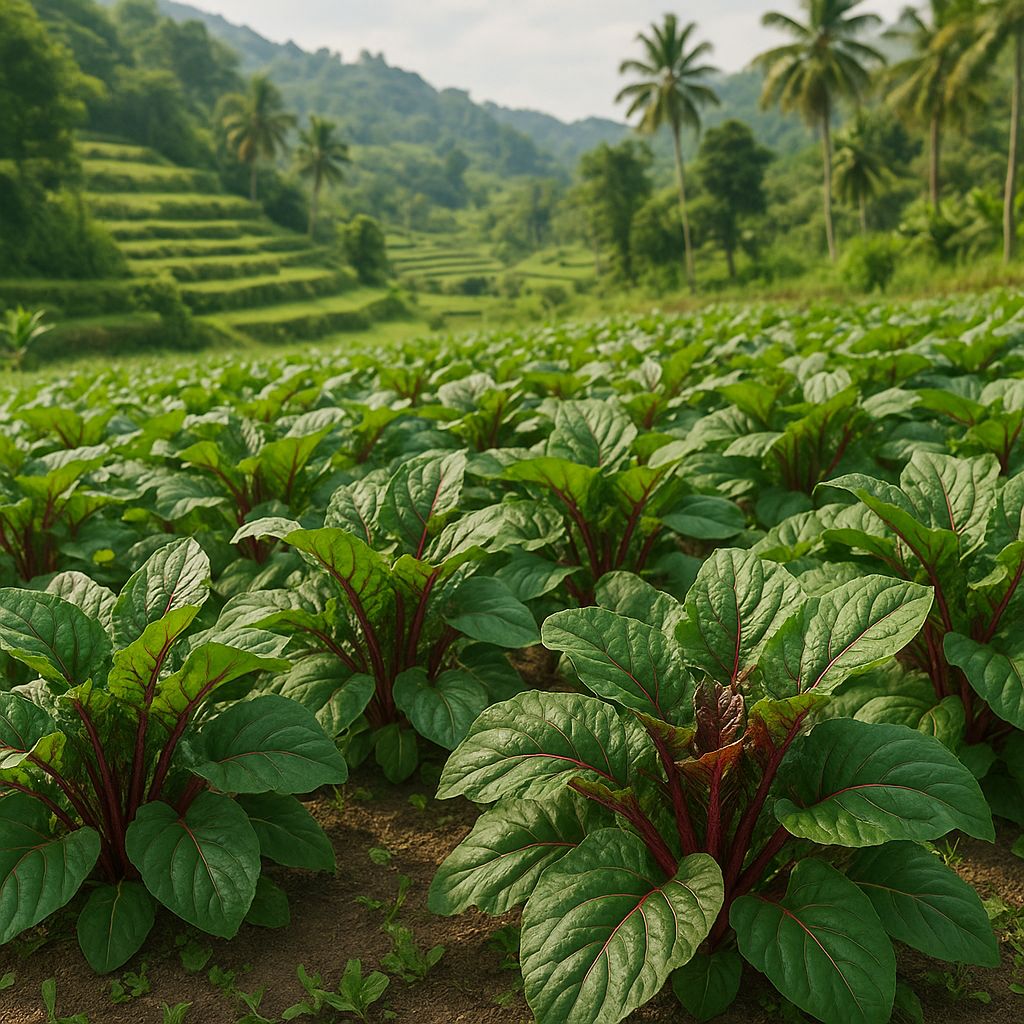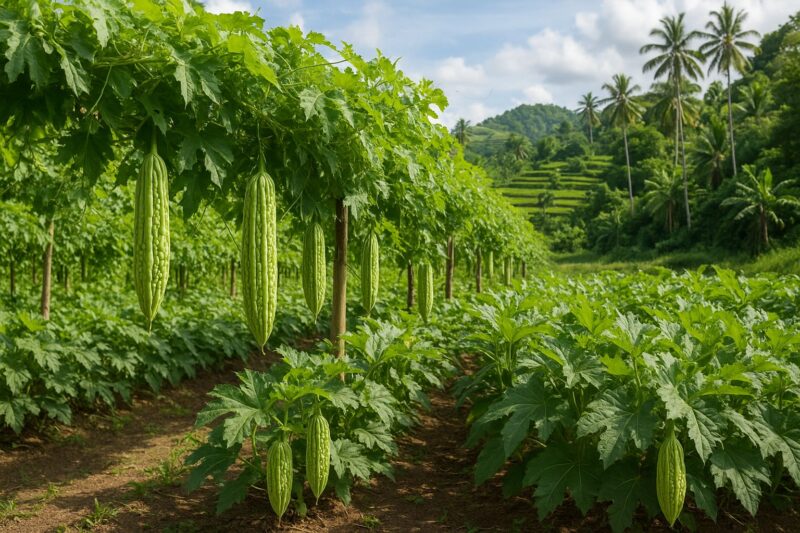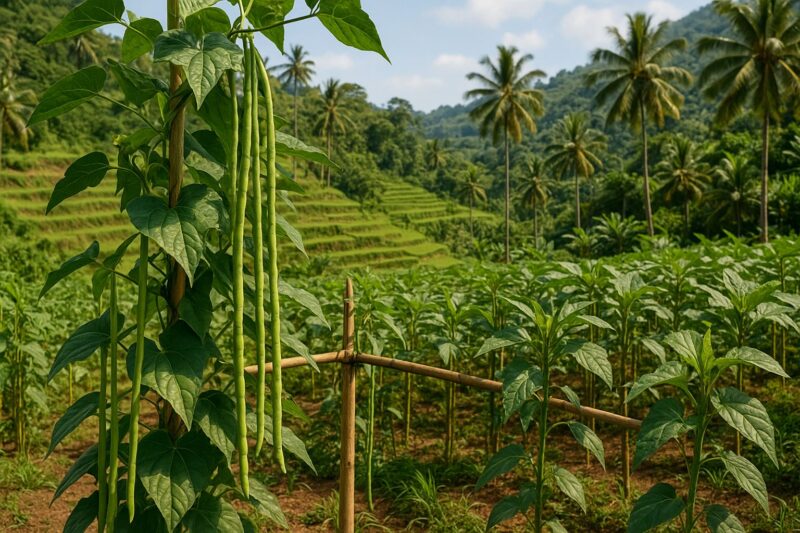Swiss chard—known locally as marañgaya—brings colorful stalks and tender, nutritious leaves to Filipino gardens and kitchens alike. Though often associated with cooler climates, chard thrives under our tropical conditions when given partial shade, fertile soil, and consistent care. From raised beds in Bulacan to terrace plots in Bukidnon, here’s how to grow crisp, vibrant chard year-round.
Variety Selection
Choose rainbow-stemmed types—“Bright Lights” or local selections with red, yellow, and white ribs—for visual appeal, or classic green-and-white “Fordhook” for steady leaf yields. In Bulacan’s heat, I interplant both: rainbow chard along shaded fences and Fordhook in containers. Upland growers in Tagaytay often stick to green types, which form larger leaves in cooler nights.
Soil Preparation
Chard demands rich, loose soil with good drainage. In clay-loam beds, double-dig to 20 centimeters and work in two wheelbarrows of homemade compost plus a handful of rice hull charcoal per ten square meters to improve aeration. In sandy coastal plots, add coconut coir or aged chicken manure to boost moisture retention. Aim for pH 6.0–7.0; if acidity is high, apply a light dressing of dolomite lime a week before planting.
Sowing and Timing
Sow chard any time the temperature stays below 32 °C—typically November through February in lowlands, and year-round in cool uplands. Broadcast seeds evenly over beds or draw furrows 30 centimeters apart and drop seeds every 5 centimeters. Cover seeds one centimeter deep and water gently. Germination takes 7–10 days at 20–30 °C. In Bulacan’s hottest weeks, I shade seedbeds with mesh cloth until seedlings appear.
Thinning and Spacing
Once seedlings reach 5 centimeters tall—roughly two weeks after sowing—thin to 20–25 centimeters apart by snipping extras at soil level. Wider spacing encourages larger leaves and better airflow, reducing mildew risk in humid weather.
Watering and Mulching
Swiss chard needs consistent moisture for tender growth but dislikes waterlogged feet. Water deeply each morning—wetting soil 10–15 centimeters down—then allow the surface to dry slightly by afternoon. Mulch with rice straw or shredded leaves to conserve moisture, suppress weeds, and moderate soil temperature.
Feeding and Side-Dressing
At sowing, mix a handful of compost into each row. Four weeks later, when plants sport 6–8 true leaves, side-dress with decomposed chicken manure or compost tea around the drip line to supply nitrogen for lush foliage. Chard’s rapid growth seldom needs more feeding; over-fertilizing can reduce leaf tenderness.
Sunlight and Shade
While chard tolerates full sun, partial shade—especially during midday—keeps leaves from wilting and bolting. In open fields, interplant with taller corn or okra. On rooftops or balconies, position containers east-facing to catch morning light while avoiding the harsh afternoon glare.
Pest and Disease Management
Chard faces few serious pests. Aphids may cluster on new growth—flush with a water spray or apply a mild neem-soap infusion. Leaf miners leave pale trails—remove affected leaves promptly and rotate beds with root crops to break pest cycles. Occasional mildew appears under dense canopies—prune inner leaves and thin plants to improve air flow.
Harvesting and Continuous Cropping
Begin cutting outer leaves once they reach 15–20 centimeters tall—usually four to six weeks after sowing. Snip stems just above the second node, leaving the central shoot intact for regrowth. Frequent harvesting—every 7–10 days—encourages continuous leaf production for three to four months. Replace beds once vigor declines or sow new seeds every six weeks for a steady supply.
Case Study
A terrace grower in Bukidnon layers chard under citrus trees, using filtered sun and nutrient-rich soil leached from household compost. She enjoys six harvests per bed, selling colorful bundles to Baguio cafes that prize the rainbow stalks in salad mixes.
Final Thoughts
Swiss chard’s adaptability, colorful stems, and rapid, cut-and-come-again growth make it a valuable addition to any Filipino garden—from backyard plots to urban containers. By mastering variety choice, soil health, sowing timing, moisture, feeding, and simple pest checks, you can harvest vibrant marañgaya season after season.
I’m open for consulting and speaking opportunities on sustainable leafy-green production and urban agriculture nationwide. Let’s grow together.
#Marañgaya #SwissChard #LeafyGreens #PhilippineFarming #SustainableAgriculture #HomeGarden #ConsultingAvailable #SpeakingOpportunities




